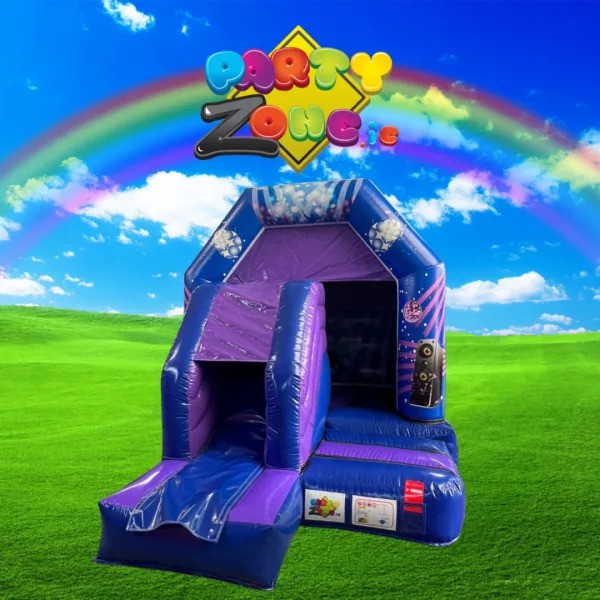
Bouncy castles are a source of joy at parties, fairs, and events, delighting children and even some adults with their colorful, inflatable allure. However, with great fun comes great responsibility. Just like any shared space, a bouncy castle requires a certain level of etiquette to ensure that everyone enjoys themselves safely and respectfully. Whether you’re hosting an event, supervising children, or taking a turn inside the bouncy castle yourself, adhering to proper bouncy castle etiquette is key to a successful and fun experience.
1. Supervision is Non-Negotiable
First and foremost, supervision is crucial when it comes to bouncy castles. While these inflatables may seem harmless, they can quickly become dangerous if not monitored. Ensure that a responsible adult is always present to oversee the activity. This person should be attentive, not distracted by their phone or other tasks, and should be familiar with the safety rules. The supervisor’s job is to control the number of children inside the castle, manage conflicts, and ensure that the rules are being followed.
2. Observe Age and Size Limits
Bouncy castles are typically designed with specific age and size restrictions. Younger children can be easily overpowered by older, bigger kids, leading to accidents and injuries. To prevent this, it’s important to segregate the use of the bouncy castle by age or size, allowing smaller children to bounce separately from older ones. Some events may even have designated time slots for different age groups, which is an excellent way to ensure everyone gets a fair and safe turn.
3. Follow the ‘No Shoes’ Rule
Shoes and bouncy castles do not mix. Not only can shoes damage the inflatable material, leading to costly repairs, but they can also cause injuries. A simple misstep with a shoe on can result in a twisted ankle or worse. Always ensure that everyone removes their shoes before entering the bouncy castle. Additionally, socks should be worn to protect feet from friction burns. It’s also a good idea to check for any sharp objects or accessories like keys, jewelry, or glasses that could cause injury or damage the bouncy castle.
4. No Roughhousing
Bouncy castles are meant for bouncing, not wrestling. Roughhousing, such as pushing, shoving, or tackling, can lead to serious injuries. It’s easy for someone to lose their balance or fall awkwardly when bouncing, so it’s important to keep the activity light-hearted and gentle. Establish clear rules with the children before they enter the bouncy castle, emphasizing that while they can jump and bounce to their heart’s content, aggressive behavior is off-limits.
5. Set Time Limits
Time limits are a helpful way to ensure that everyone gets a turn to enjoy the bouncy castle. This is particularly important at larger events where there may be many children eager to jump. By setting a timer and rotating groups, you can avoid overcrowding and give everyone a fair chance to enjoy the fun. Plus, this also helps manage energy levels, as kids can quickly become exhausted and more prone to accidents if they bounce for too long without a break.
6. Respect the Weather
Weather plays a significant role in bouncy castle safety. These inflatables are not designed to withstand strong winds or heavy rain. If the weather takes a turn for the worse, it’s essential to deflate the bouncy castle and move everyone to a safer area. Wind can easily lift a bouncy castle off the ground, posing a serious risk to those inside. Always check the weather forecast before setting up a bouncy castle, and be prepared to act quickly if conditions change.
7. Keep Food and Drinks Outside
Food and drinks should never be allowed inside a bouncy castle. Not only do they create a mess, but they also pose choking hazards, especially if children are bouncing while trying to eat or drink. Spills can make the surface slippery, increasing the risk of falls and injuries. Designate a separate area for snacks and drinks, and ensure that children take a break outside the bouncy castle when they need to eat or hydrate.
8. Mind the Entry and Exit Points
The entrance and exit of a bouncy castle are often the most chaotic areas. It’s essential to manage these points to avoid accidents. Only allow one child to enter or exit at a time, and make sure that they do so calmly and carefully. Rushing or pushing at the entrance can lead to trips and falls, both inside and outside the castle. Supervise these points closely to maintain order and safety.
9. End on a High Note
Finally, it’s important to know when to call it a day. Overly tired or overstimulated children are more likely to get hurt, so it’s best to end the bouncy castle fun before things get too chaotic. Give the children plenty of notice that the session is coming to an end so they can wind down gradually. A calm and orderly exit helps prevent last-minute accidents and ensures that everyone leaves the bouncy castle with happy memories.
Conclusion
Bouncy castles can be a highlight of any event, offering endless fun and laughter. However, this enjoyment comes with the responsibility of ensuring everyone’s safety and comfort. By following these guidelines and promoting good bouncy castle etiquette, you can help create a fun, safe, and respectful environment for all. Remember, a well-supervised and well-managed bouncy castle is not only more enjoyable but also leaves everyone with happy memories instead of bumps and bruises.
<< Return to news